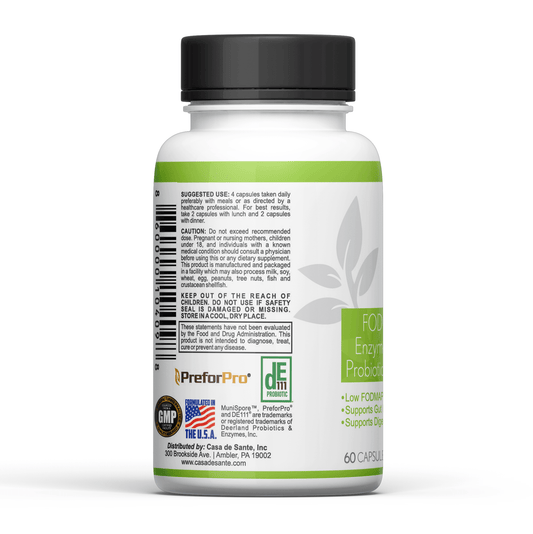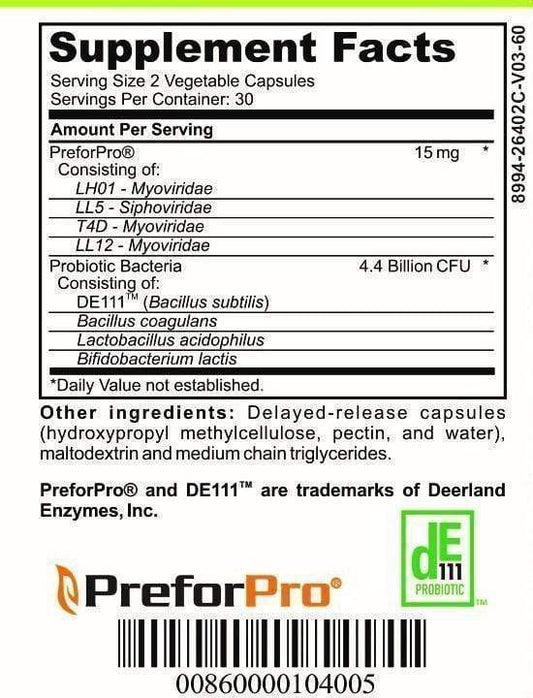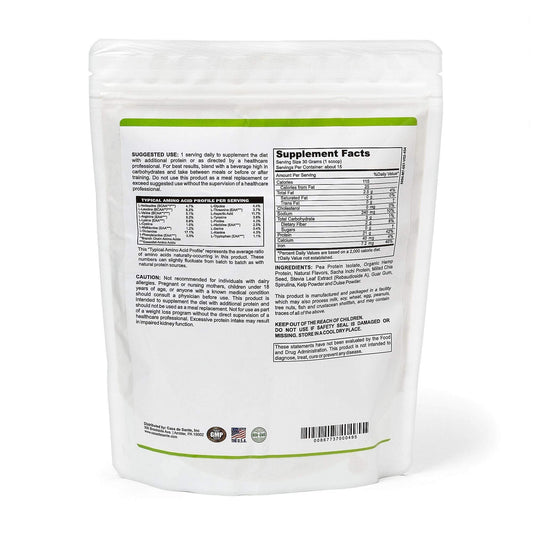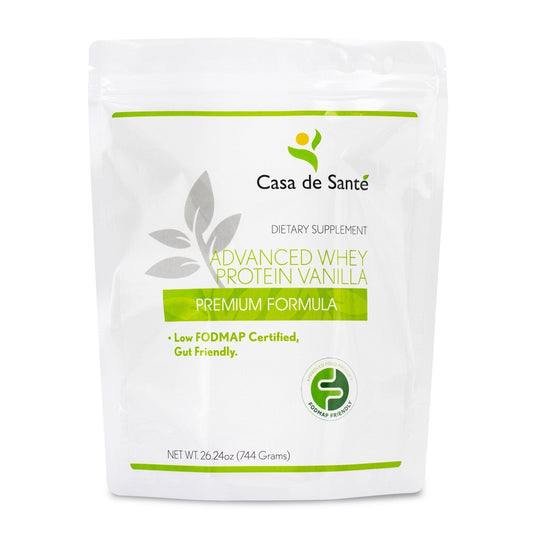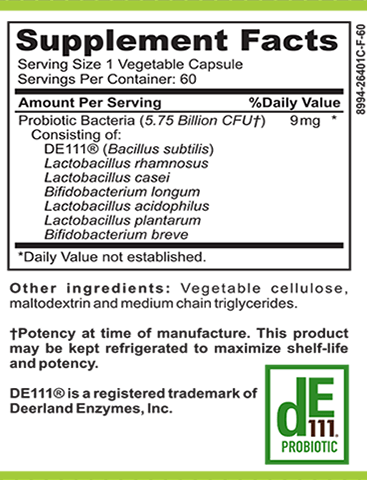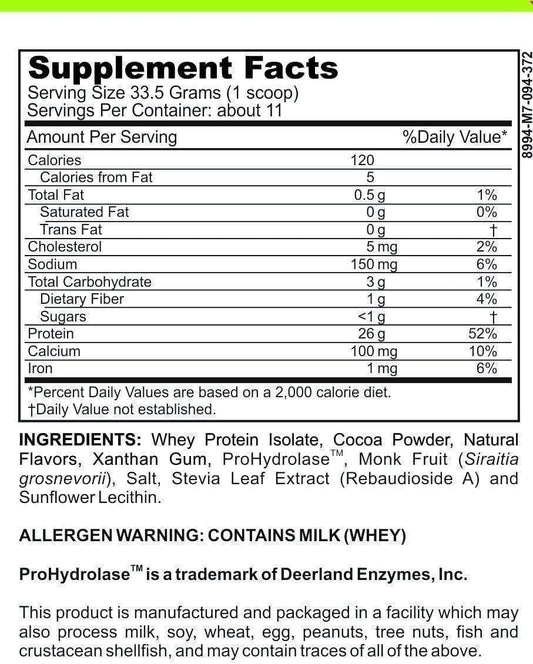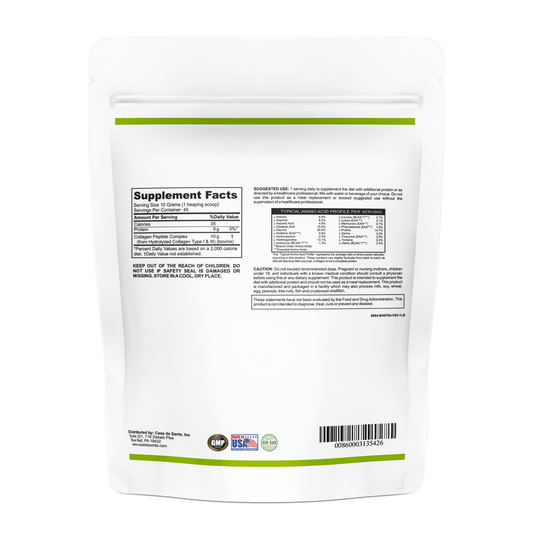How to Read Nutrition Labels on the Low FODMAP Diet
Following a low FODMAP diet can be a helpful strategy for managing symptoms related to irritable bowel syndrome (IBS). However, navigating your way through food choices and ingredient lists can sometimes be challenging. Understanding how to read nutrition labels is essential to ensure you make informed decisions about the foods you consume. In this article, we will break down the process of decoding nutrition labels on the low FODMAP diet, as well as provide tips for shopping and maintaining a balanced diet while on this eating plan.
Understanding the Low FODMAP Diet
Before we delve into the specifics of reading nutrition labels, let's briefly touch upon the low FODMAP diet itself. FODMAP stands for Fermentable Oligosaccharides, Disaccharides, Monosaccharides, and Polyols. These are a group of carbohydrates and sugar alcohols that can be poorly absorbed in the small intestine, leading to symptoms such as bloating, gas, and diarrhea in individuals with IBS.
The low FODMAP diet involves temporarily eliminating high FODMAP foods from your diet and then systematically reintroducing them to determine your tolerance level for each group. The goal is to identify and avoid trigger foods that may be causing digestive distress.
But what exactly are high FODMAP foods? Well, they include a wide range of fruits, vegetables, grains, dairy products, and sweeteners. Some examples of high FODMAP fruits are apples, cherries, and watermelon. High FODMAP vegetables include onions, garlic, and mushrooms. When it comes to grains, wheat and rye are considered high FODMAP. Dairy products like milk, yogurt, and soft cheeses can also be high in FODMAPs. Even some artificial sweeteners like sorbitol and mannitol fall into the high FODMAP category.
Benefits of the Low FODMAP Diet
Research has shown that following a low FODMAP diet can significantly reduce gastrointestinal symptoms in individuals with IBS. By avoiding or limiting high FODMAP foods, many people experience relief from bloating, abdominal pain, and irregular bowel movements.
Moreover, the low FODMAP diet is not just beneficial for individuals with IBS. It can also be helpful for those with other digestive disorders such as inflammatory bowel disease (IBD) and small intestinal bacterial overgrowth (SIBO). By reducing the intake of fermentable carbohydrates and sugar alcohols, the low FODMAP diet can help alleviate symptoms in these conditions as well.
However, it is important to note that the low FODMAP diet is not a long-term solution. It is meant to be followed for a limited period of time, typically around 2-6 weeks, to identify trigger foods and establish a personalized dietary plan. Once trigger foods have been identified, they can be reintroduced in moderation, allowing for a more varied and balanced diet.
It is also worth mentioning that the low FODMAP diet should be undertaken with the guidance of a healthcare professional or a registered dietitian who specializes in digestive health. They can provide personalized advice, ensure nutritional adequacy, and help navigate the complexities of the diet.
In conclusion, the low FODMAP diet is a dietary approach that aims to reduce symptoms in individuals with IBS and other digestive disorders. By eliminating high FODMAP foods and gradually reintroducing them, individuals can identify their trigger foods and create a personalized diet that promotes digestive comfort and overall well-being.
Decoding Nutrition Labels
When it comes to reading nutrition labels, it's important to pay attention to certain key components. Let's explore why reading nutrition labels is crucial and highlight the essential elements to look for.
Understanding the nutritional content of the foods we consume is essential for maintaining a healthy lifestyle. Nutrition labels provide valuable information about the nutrient composition of a product, including its macronutrient and micronutrient content. By carefully reading these labels, you can make informed decisions and choose foods that align with your dietary needs and goals.
Importance of Reading Nutrition Labels
Nutrition labels serve as a guide to help us understand what we are putting into our bodies. They provide detailed information about the amount of calories, carbohydrates, proteins, fats, vitamins, and minerals present in a particular food item. By reading these labels, we can gain insight into the nutritional value of the food and make choices that support our overall health and well-being.
Moreover, nutrition labels can be especially helpful for individuals with specific dietary requirements or health conditions. For example, someone with diabetes may need to closely monitor their carbohydrate intake, while someone with high blood pressure may need to limit their sodium consumption. By reading nutrition labels, individuals can easily identify foods that meet their specific needs.
Key Components of Nutrition Labels
When reading a nutrition label, it's important to start by examining the serving size and number of servings per container. This information will help you determine appropriate portion sizes and calculate nutrient intakes accurately. It's easy to overlook this detail, but understanding the serving size is crucial for accurately interpreting the nutritional information provided.
Next, pay attention to the total calories per serving, as well as the amounts of carbohydrates, proteins, and fats. These macronutrients are essential for providing energy and supporting various bodily functions. By ensuring that the nutrient composition aligns with your dietary requirements, you can make choices that support your health and well-being.
Moving down the label, check the dietary fiber content. High fiber foods can be beneficial for overall gut health, promoting regular bowel movements and aiding in digestion. However, it's important to note that certain types of fiber may be high in FODMAPs, which can trigger symptoms in individuals with irritable bowel syndrome (IBS). If you have IBS, it's important to be mindful of the type and amount of fiber in the foods you consume.
Additionally, keep an eye out for added sugars. Excessive sugar consumption can have negative effects on our health, including an increased risk of obesity, diabetes, and heart disease. For individuals with IBS, excessive sugar intake can worsen symptoms such as bloating, gas, and abdominal pain. By being aware of the sugar content in the foods we consume, we can make healthier choices and reduce our risk of developing these conditions.
Finally, take the time to review the ingredient list. This is where you need to be alert for potential high FODMAP ingredients that may trigger your symptoms. Ingredients are listed in descending order by weight, so the first few ingredients are the most prominent. Familiarize yourself with common high FODMAP ingredients, such as certain fruits, vegetables, dairy products, and sweeteners, to ensure you are making choices that support your digestive health.
In conclusion, reading nutrition labels is crucial for making informed decisions about the foods we consume. By paying attention to the key components of nutrition labels, such as serving size, macronutrient content, fiber, added sugars, and ingredients, we can make choices that align with our dietary needs and goals. So the next time you pick up a food product, take a moment to decode its nutrition label and make a choice that supports your health and well-being.
Identifying Low FODMAP Foods on Nutrition Labels
Now that you understand the importance of reading nutrition labels, let's delve deeper into the intricacies of identifying low FODMAP foods through these labels. While it can be challenging to spot high FODMAP ingredients hidden in various food products, being familiar with common low FODMAP ingredients can simplify the process.
When examining nutrition labels, keep an eye out for specific low FODMAP ingredients that can be your allies in maintaining a balanced diet. These ingredients are not only safe to consume but can also add flavor and variety to your meals.
Common Low FODMAP Ingredients
One example of a low FODMAP ingredient is plain meats. Whether it's beef, chicken, or pork, these protein sources can be a reliable foundation for your meals. Additionally, fish and poultry, such as salmon or turkey, are also excellent low FODMAP options.
Eggs, another low FODMAP ingredient, are versatile and can be prepared in numerous ways. From scrambled eggs to omelets, they provide a nutritious and filling option for any meal of the day.
For those who enjoy dairy products, lactose-free options are a great choice. These include lactose-free milk, cheese, and yogurt, which can be enjoyed without worrying about FODMAP content.
When it comes to grains, rice is a staple low FODMAP ingredient. Whether it's white, brown, or wild rice, it can serve as a base for many dishes. Quinoa and oats are also low FODMAP options that can add variety to your meals while providing essential nutrients.
While fruits and vegetables can be a source of FODMAPs, there are certain options that are low in FODMAPs and can be enjoyed without triggering symptoms. Spinach, carrots, and blueberries are examples of low FODMAP fruits and vegetables that can be incorporated into your diet.
Spotting High FODMAP Ingredients to Avoid
On the other hand, it's crucial to be aware of high FODMAP ingredients that may trigger your symptoms. These ingredients should be avoided or consumed in moderation while following a low FODMAP diet.
One common high FODMAP ingredient to watch out for is wheat. It is present in many products, such as bread, pasta, and baked goods. Barley and rye are also high FODMAP grains that should be avoided if you are sensitive to FODMAPs.
Garlic and onions, although flavorful, contain high amounts of FODMAPs and can cause discomfort for individuals following a low FODMAP diet. It's important to read nutrition labels carefully to identify these ingredients in processed foods.
Legumes, such as chickpeas and lentils, are another group of high FODMAP ingredients to be cautious of. While they are a good source of plant-based protein, they can contribute to digestive symptoms in some individuals.
When it comes to fruits, apples and pears are high FODMAP options that should be avoided. These fruits, although healthy, contain excess fructose, which can be problematic for those with FODMAP sensitivities.
Lastly, artificial sweeteners like sorbitol and mannitol, often found in sugar-free products, can be high in FODMAPs. It's important to read labels carefully and opt for natural sweeteners or low FODMAP alternatives.
Remember, if a product contains these high FODMAP ingredients, it may not be suitable for consumption while following a low FODMAP diet. Being vigilant about reading nutrition labels and understanding the FODMAP content can help you make informed choices and maintain a well-balanced diet.
Tips for Shopping on a Low FODMAP Diet
Now that you have a grasp of how to read nutrition labels and identify low FODMAP ingredients, let's explore some tips for successful grocery shopping on a low FODMAP diet.
Preparing a Low FODMAP Shopping List
Prior to heading to the grocery store, it can be helpful to make a shopping list. Include low FODMAP foods that you enjoy and are suitable for your dietary needs. This will save you time and ensure you have the necessary ingredients for your meals and snacks.
Navigating the Grocery Store for Low FODMAP Foods
When you're at the grocery store, focus on shopping in the perimeter sections where fresh produce, meats, and dairy products are often located. These whole, unprocessed foods are more likely to be low in FODMAPs. If you do venture into the aisles, be sure to carefully read nutrition labels and refer to your low FODMAP ingredient list.
Maintaining a Balanced Diet While on Low FODMAP
Following a low FODMAP diet doesn't mean you have to compromise on nutrition or flavor. With proper planning and a variety of food choices, you can still enjoy a balanced and nourishing diet.
Ensuring Adequate Nutrient Intake
While avoiding high FODMAP foods, it's important to make sure you still meet your nutrient requirements. Include a variety of low FODMAP fruits, vegetables, whole grains, lean proteins, and healthy fats in your meals to ensure you are getting a range of vitamins, minerals, and antioxidants.
Adjusting Portion Sizes on the Low FODMAP Diet
Portion sizes can play a role in managing FODMAP intake. Some low FODMAP foods can become high FODMAP when consumed in large quantities. Experiment with portion sizes and pay attention to your body's response to find the right balance for you.
In conclusion, reading nutrition labels is a crucial skill to develop while on the low FODMAP diet. By understanding the key components of nutrition labels and identifying low FODMAP ingredients, you can confidently make food choices that support your digestive health. Remember to prepare a shopping list, navigate the grocery store strategically, and maintain a balanced diet that meets your nutrient needs. With these tips, the low FODMAP diet can become more manageable, enjoyable, and beneficial in managing your IBS symptoms.


